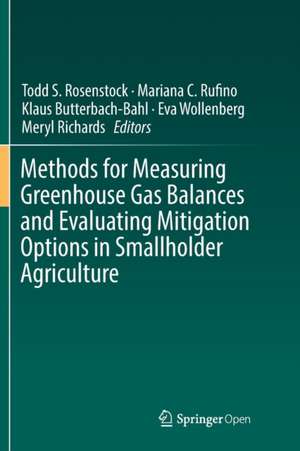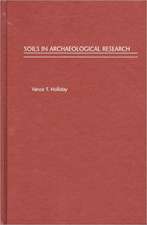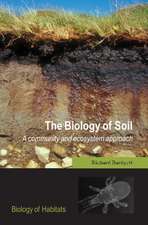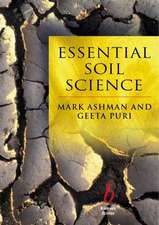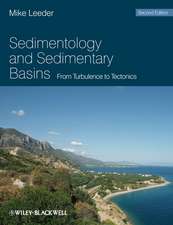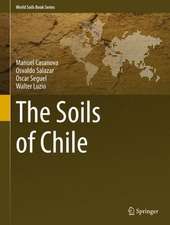Methods for Measuring Greenhouse Gas Balances and Evaluating Mitigation Options in Smallholder Agriculture
Editat de Todd S. Rosenstock, Mariana C. Rufino, Klaus Butterbach-Bahl, Lini Wollenberg, Meryl Richardsen Limba Engleză Paperback – 22 apr 2018
| Toate formatele și edițiile | Preț | Express |
|---|---|---|
| Paperback (1) | 416.92 lei 6-8 săpt. | |
| Springer International Publishing – 22 apr 2018 | 416.92 lei 6-8 săpt. | |
| Hardback (1) | 424.22 lei 6-8 săpt. | |
| Springer International Publishing – 31 aug 2016 | 424.22 lei 6-8 săpt. |
Preț: 416.92 lei
Nou
Puncte Express: 625
Preț estimativ în valută:
79.79€ • 82.79$ • 66.69£
79.79€ • 82.79$ • 66.69£
Carte tipărită la comandă
Livrare economică 15-29 martie
Preluare comenzi: 021 569.72.76
Specificații
ISBN-13: 9783319806563
ISBN-10: 3319806564
Ilustrații: XV, 203 p. 33 illus., 27 illus. in color.
Dimensiuni: 155 x 235 mm
Greutate: 0.31 kg
Ediția:Softcover reprint of the original 1st ed. 2016
Editura: Springer International Publishing
Colecția Springer
Locul publicării:Cham, Switzerland
ISBN-10: 3319806564
Ilustrații: XV, 203 p. 33 illus., 27 illus. in color.
Dimensiuni: 155 x 235 mm
Greutate: 0.31 kg
Ediția:Softcover reprint of the original 1st ed. 2016
Editura: Springer International Publishing
Colecția Springer
Locul publicării:Cham, Switzerland
Cuprins
Chapter1 Introduction to the SAMPLES Approach.- Chapter 2 Targeting Landscapes toIdentify Mitigation Options.- Chapter 3 Determining Greenhouse Gas Emissionsand Removals Associated with Land Use and Land Cover Change.- Chapter 4 QuantifyingGreenhouse Gas Emissions from Managed and Natural Soils.- Chapter 5 AComparison of Methodologies for Measuring Methane Emissions from Ruminants.- Chapter6 Quantifying Tree Biomass Carbon Stocksand Fluxes in Agricultural Landscapes.- Chapter 7 Methods for SmallholderQuantification of Soil Carbon Stocks and Stock Changes.- Chapter 8 Yield Estimation of Food andNon-Food Crops in Smallholder Production Systems.- Chapter 9 Scaling Point andPlot Measurements of Greenhouse Gas Fluxes, Balances and Intensities to WholeFarms and Landscapes.- Chapter 10 Methods for Environment-Productivity Trade-offAnalysis in Agricultural Systems.
Notă biografică
Todd S. Rosenstock is an Environmental Impacts Scientist at the The World Agroforestry Centre (ICRAF) in Nairobi, Kenya.Dr. Klaus Butterbach-Bahl is Head of Department “Atmosphere/ Biosphere Interactions and Global Change” at IMK-IFU, Karlsruhe Research Centre. He is also a senior scientist in Biogeochemistry at the International Livestock Research Institute (ILRI) in Kenya.
Dr. Meryl Richards is an agroecologist who joined theResearch Program on Climate Change, Agriculture and Food Security (CCAFS) inJanuary 2013 as a Science Officer for Theme 3: Pro-Poor Climate ChangeMitigation. Her research experience and interests center around synergies andtrade-offs between food security and environmental conservation in smallholderagriculture, as well as measurement of GHG emissions from agriculture. She hasa particular interest in agroforestry systems and has conducted research inCentral America and West Africa.
Dr. Marina Rufino is a SeniorScientist and team leader at Forest and Environment, Center forInternational Forestry Research (CIFOR) in Indonesia.Dr. Lini Wollenberg is Research Associate Professor at the Gund Institute for Ecological Economics and Rubenstein School of Environment and Natural Resources, University of Vermont. She was previously the Director of the Center for Sustainable Agriculture, U. of Vermont (2007-2009); Principle Scientist at the Center for International Forestry Research (1994-2005); and Program Officer for Asia’s Rural Poverty and Resources Program at the Ford Foundation (1991-1994).
Dr. Eva Wollenberg is currently Flagship Leader for LowEmissions Agriculture for CCAFS and Research Associate Professor at the GundInstitute for Ecological Economics and Rubenstein School of Environment andNatural Resources, University of Vermont. She was previously the Director ofthe Center for Sustainable Agriculture, U. of Vermont (2007-2009); PrincipleScientist atthe Center for International Forestry Research (1994- 2005); andProgram Officer for Asia’s Rural Poverty and Resources Program at the FordFoundation (1991-1994).
Textul de pe ultima copertă
This book provides standards and guidelines forquantifying greenhouse gas emissions and removals in smallholder agricultural systemsand comparing options for climate change mitigation based on emissionreductions and livelihood trade-offs. Globally, agriculture is directlyresponsible for about 11% of annual greenhouse gas (GHG) emissions and inducesan additional 17% through land use change, mostly in developing countries.Farms in the developing countries of sub-Saharan Africa and Asia arepredominately managed by smallholders, with 80% of land holdings smaller thanten hectares. However, little to no information exists on greenhouse gasemissions and mitigation potentials in smallholder agriculture. Greenhouse gas measurements in agricultureare expensive, time consuming, and error prone, challenges only exacerbatedby the heterogeneity of smallholder systems and landscapes. Concerns overmethodological rigor, measurement costs, and the diversity of approaches,coupled with the demand for robust information suggest it is germane for thescientific community to establish standards of measurements for quantifying GHGemissions from smallholder agriculture. Standard guidelines for use byscientists, development organizations will help generate reliable data onemissions baselines and allow rigorous comparisons of mitigation options. Theguidelines described in this book, developed by the CGIAR Research Program onClimate Change, Agriculture, and Food Security (CCAFS) and partners, areintended to inform anyone conducting field measurements of agriculturalgreenhouse gas sources and sinks, especially to develop IPCC Tier 2 emissionfactors or to compare mitigation options in smallholder systems.
Caracteristici
Provides guidelines for low-cost assessment of greenhouse gas emissions in smallholder farming systems Discusses methods for assessing economic and social acceptability of climate change mitigation measures? Will bring attention attention to trade-offs between carbon sequestration, farmers income, and other social outcomes
